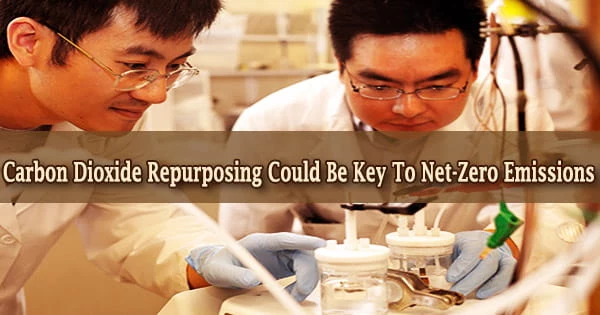Carbon dioxide, despite making up a very little percentage of the atmosphere, is critical for the survival of life on our planet. Excess carbon dioxide, on the other hand, can represent a serious threat to our ecosystem and the living things that live inside it if this delicate equilibrium is upset.
A group of researchers from Texas A&M University’s Artie McFerrin Department of Chemical Engineering recently published a comprehensive review article on how carbon dioxide can be isolated through reduction reactions and then converted into value-added chemicals for fuels, allowing excess carbon dioxide to be repurposed.
“People are looking into innovative ways to mitigate global warming and minimize our impacts on the environment,” said Denis Johnson, the first author on the study and a doctoral student in the chemical engineering department. “Through scientific advancements, such as our own, we remain hopeful that one day we may be able to start reversing what has already been done.”
Dr. Abdoulaye Djire, an assistant professor in the chemical engineering department, is the lead author of the study, which was co-authored by Dr. Zhi Qiao, a former postdoctoral researcher in the department. The research was published in the journal Applied Energy Materials by the American Chemical Society.
Carbon dioxide, as Johnson proposes, is a possible contribution to global warming. Carbon dioxide levels in the atmosphere will continue to rise unless the current energy system is modified, according to the US Energy Information Administration.
There are now various strategies for reducing carbon dioxide’s detrimental effects. Decarbonization is one such way, in which carbon is simply removed from supply chains. Decarbonization, despite its appeal, necessitates the use of alternative carbon sources, such as liquid fuels and feedstocks, making it unsustainable.
Excess carbon dioxide does more harm than good. Research has found that products derived from carbon dioxide, whether they were carbon monoxide, methanol or ethanol, all have much greater use than carbon dioxide alone with the included benefit of posing less health and environmental hazards.
Denis Johnson
Due to escalating industry prices and a lack of technology capable of accomplishing this duty, another method known as carbon sequestration, in which carbon is taken from the atmosphere, is no longer economically viable.
“Excess carbon dioxide does more harm than good,” said Johnson. “Research has found that products derived from carbon dioxide, whether they were carbon monoxide, methanol or ethanol, all have much greater use than carbon dioxide alone with the included benefit of posing less health and environmental hazards.”
As a result, the researchers are looking into whether carbon dioxide reduction processes, which use power to transform carbon dioxide into other carbon molecules, are viable alternatives.
Carbon dioxide can be purified and extracted from emissions or the atmosphere using amine columns or other carbon capture devices. The researchers can then undertake the carbon dioxide reduction reaction using a transition metal to trigger the electrochemical reaction once the carbon dioxide has been purified.
Furthermore, according to the researchers, one of the advantages of this chemical process is that different products can be created depending on which transition metal is employed, such as copper or nickel.
Carbon dioxide may be repurposed to make a number of carbonaceous compounds, such as propanol for medications or ethanol for fuels, which have significantly higher value and versatility.
“Let’s say we get back every amount of carbon dioxide we put in, we could potentially use the carbon dioxide to produce ethanol, which can then be mixed back into fuel using recycled carbon dioxide,” said Johnson.
The article begins by providing a useful resource for other researchers in the field by describing the electrochemical approaches currently being employed to lessen the harmful effects of carbon dioxide. Tutorials on the techniques used to help study the catalysts and products of the electrochemical carbon dioxide reduction process follow the main article.
“This process can fundamentally change the impacts of carbon dioxide, making it a form of renewable energy while simultaneously providing carbon sources to industries dependent on the product, reducing its negative environmental impact,” said Djire. “This work summarizes what we know about carbon dioxide recycling and transformation, and how we can carry this information into the future.”





